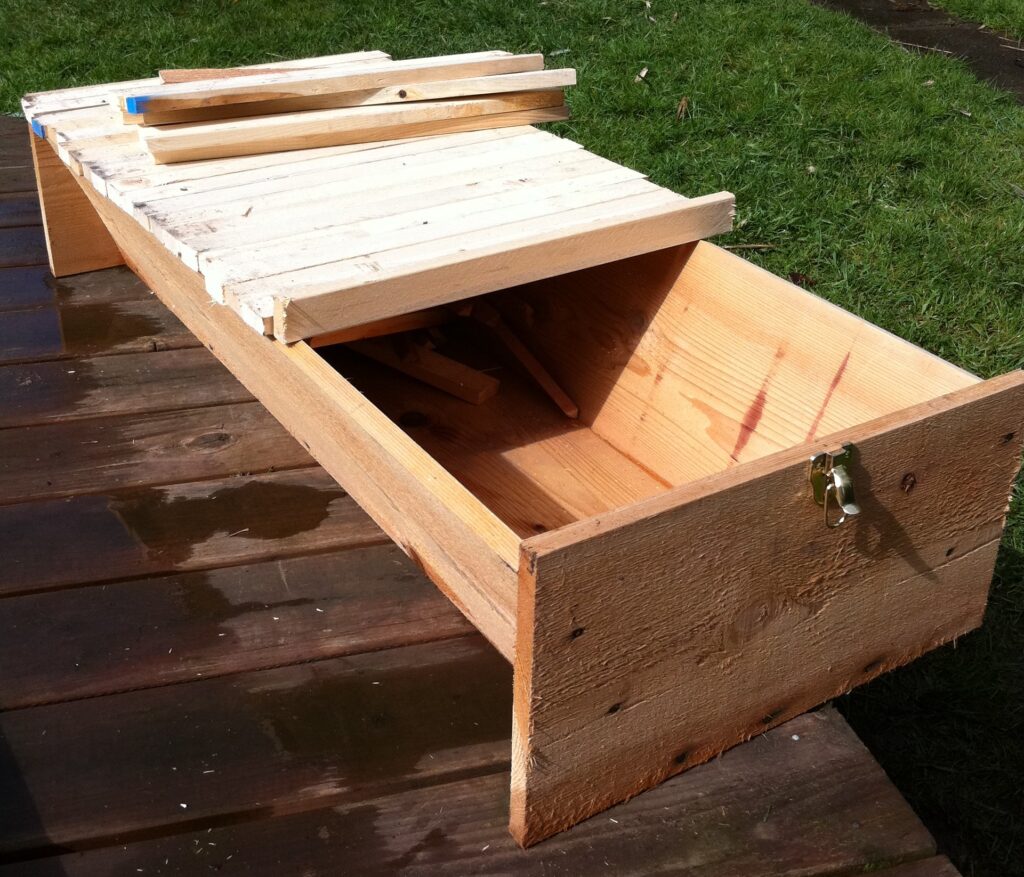As an urban beekeeper, I get asked the same questions alot, so I thought I’d start a FAQ. Here are some samples:
Q: Can you really keep bees in the city? Don’t your neighbors mind?
A: Yes, Seattle lets you keep up to 4 licensed beehives in your urban backyard. The neighbors generally don’t even know, as the bees range far. Mostly they’ll just notice an improved vegetable harvest.
Q: Do you get stung?
A: Yes.
Q: Really? But you must get used to it, huh?
A: No. Ouch. That really hurt.
Q: Don’t you wear that crazy beekeeper suit?
A: They can sting you OW! through OW! it. OW!
Q: Why do you keep saying ow?
A: I just got stung! OUCH! G-d d…OW!
Yeah, I just went into the hives, a frustrating and painful experience. First, I got stung 7 times. OW! No, you do not get used it to. The only mitigating factor is that when they sting me through my clothing, I can pull out the stinger almost instantly just by pulling on my clothing. Usually, when you get a bee sting, there’s a little barb that keeps the stinger in your skin and the venom sac pulls off with the stinger. That’s why bees die when they sting you: they leave half their rear ends pumping venom into you. Note too that that little pumping sac at the end of the stinger is still pumping venom after they leave it behind, so you’re best served to remove it quickly. However, don’t pinch it to pull it out, because that just shoves more venom in. Try to flick the stinger off, maybe with a credit card. Or just scream obscenities and flail at the air. That works, too.
Anyway, as you may remember, I’ve had this problem with too many broodchambers. Well, I got some good advice from some more experienced beekeepers who visited the blog (thanks Robo and Susi!) so I decided to go in and take care of it. The advice was to find the queen and move her down, or else just rotate the brood chambers so that the chamber she’s in is at the bottom. Or just leave ’em, there’s nothing disastrous about having more brood chambers, and apparently many beekeepers do it on purpose.
OK, here’s the thing about the “find the queen” step in those instructions. There are 50,000 freakin’ bees in the hive and, no offense intended here, but they all look alike! I mean, I know the queens a bit bigger and more golden and she probably still has a little paint splotch on her, but it’s not like I’ve got a bunch of guys checking passports and filtering the girls through metal detectors. I looked, I looked, I looked. OW! I got stung and stung and stung and I couldn’t find the queen.
Well, maybe I’ll just leave it, right? Well, she’s laying great. Seriously, lots of brood.
In my honey supers.
That is not where she is supposed to be laying. That’s where the honey is supposed to go. Was I supposed to put in the queen excluder (a metal screen with spaces big enough for regular bees to get through but too small for the larger queen to get through) in already? For some reason I thought I didn’t need to put that in until later in the season.
Crap all. Same thing in Hive 2, by the way. Brood up in honey super.
Anyway, so I took out the bottom brood chamber from Hive 1 (it was full of pollen mostly and almost entirely inhabited by drones), moved the top brood chamber down to the bottom position (I dunno, maybe that will do something useful) and added a third honey super (they’re already filling everything they’ve got). I didn’t want to move the honey supers to the bottom, below the brood chambers, as that just seems like giving up on them as honey supers. I think it’s time to consult with a professional.





